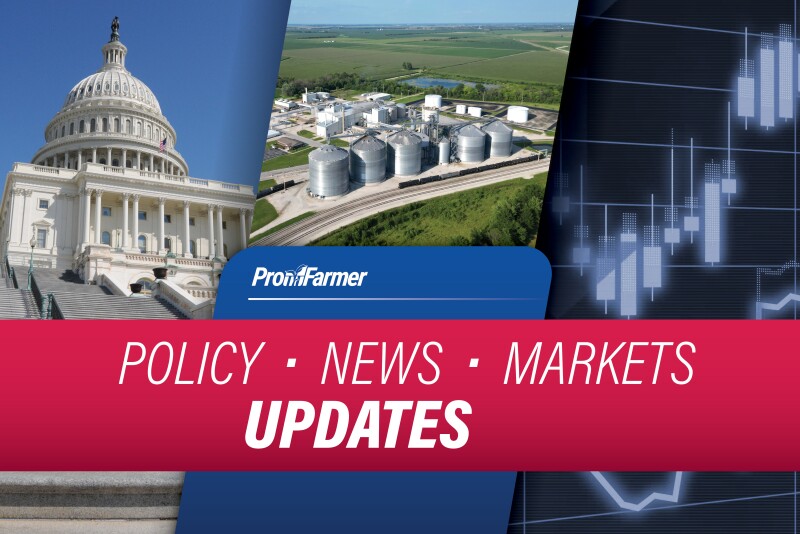Trump says new tariff rates coming soon for dozens of countries... President Donald Trump said he would set tariff rates for U.S. trading partners “over the next two to three weeks,” saying his administration lacks the capacity to negotiate deals with all of its trading partners, according to Bloomberg. Trump said Treasury Secretary Scott Bessent and Commerce Secretary Howard Lutnick “will be sending letters out essentially telling people” what “they’ll be paying to do business in the United States.” He said, “I think we’re going to be very fair. But it’s not possible to meet the number of people that want to see us,” while noting there are “150 countries that want to make a deal.”
Negotiations are ongoing with several major trading partners, including Japan, South Korea, India and European Union, but the White House has since moved away from the idea of negotiating with every partner, opting instead for a more streamlined approach. This marks a significant shift in U.S. trade policy, signaling a preference for broad, unilateral tariff measures over complex, country-by-country trade deals.
Rollins continues her global trade mission... USDA Secretary Brooke Rollins is set to continue her aggressive international trade agenda with upcoming visits to Italy, India, Vietnam, Japan and South America, aiming to promote U.S. agricultural exports and negotiate improved market access for American farmers and ranchers. After concluding a high-profile trade mission to the United Kingdom— where she advocated for lower tariffs and greater market access for U.S. products following a new U.S./UK trade deal —Rollins is now turning her attention to other major global markets. In Italy, Rollins will address longstanding non-tariff barriers that have limited U.S. agricultural exports, seeking to open new opportunities for American producers.
Following her stop in Italy, Rollins will travel to India, Vietnam and Japan, where she has indicated plans to push for increased imports of American farm products and to help rectify persistent trade imbalances. The U.S. currently faces a $1.3 billion agricultural trade deficit with India and is also seeking to address significant deficits with Brazil and other countries. Rollins’ mission includes advocating for science-based regulatory alignment and fairer treatment of U.S. products in these markets.
In Japan, intensive ministerial negotiations are already underway, with both countries aiming for a mutually beneficial deal as early as June (although Japanese elections in July could impact the timing). Rollins is expected to press for market-opening measures for key U.S. commodities, including beef, pork, rice, and specialty crops, while addressing Japanese tariffs and regulatory barriers.
The broader effort is part of a Trump administration push to reverse what it describes as a period of trade stagnation and deficits under the previous administration, with a renewed focus on putting “Farmers First” and expanding the global reach of American agriculture.
Rollins’ travel agenda over the next several months also includes visits to Peru and Brazil, as well as participation in additional USDA trade missions to markets such as the Dominican Republic, Taiwan, Côte d’Ivoire and Mexico.
Rollins emphasized the importance of these missions, stating, “Our farmers and ranchers produce the safest, highest quality food in the world, and I can’t wait for consumers across the globe to get more of a taste of the beef, poultry, pork, seafood, rice, specialty crops, and all the agricultural exports America has to offer.” By targeting key partners and emerging markets, Rollins aims to secure new export opportunities, reduce trade deficits, and ensure American producers remain competitive on the world stage.
Marfrig finalizes takeover of BRF, creating meat giant MBRF... Brazilian beef giant Marfrig has completed its long-awaited acquisition of poultry and pork leader BRF, forming a new meat conglomerate, MBRF, that now ranks as Brazil’s second-largest meat processor behind JBS. The merger is poised to significantly alter the global protein landscape by combining Marfrig’s beef dominance with BRF’s strength in poultry and pork.
Strategic and Global Implications
- International expansion: MBRF will manage National Beef (U.S.), further broadening its global footprint.
- Competitive edge: Move counters JBS’ anticipated U.S. IPO; MBRF may seek a U.S. listing to boost valuation.
- Output: MBRF will produce around 8 million tons of beef, pork, poultry and processed products annually.
- Export power: Consolidation boosts Brazil’s influence in key markets like China, challenging Tyson Foods and WH Group.
Challenges
- Integration risks: Combining three protein verticals poses operational and logistical complexity.
- Regulatory hurdles: Antitrust scrutiny is expected, though prior rulings have favored agribusiness mergers.
- Financial goals: BRF aims for mid-teens revenue growth, >17% EBITDA margin and <1.0x net leverage by end-2025.
Bottom line: MBRF’s formation marks a landmark shift in the global meat industry. Its ability to execute on synergies, manage integration, and navigate competitive and regulatory pressures will determine whether this bold consolidation reshapes the global protein market for the long term.

